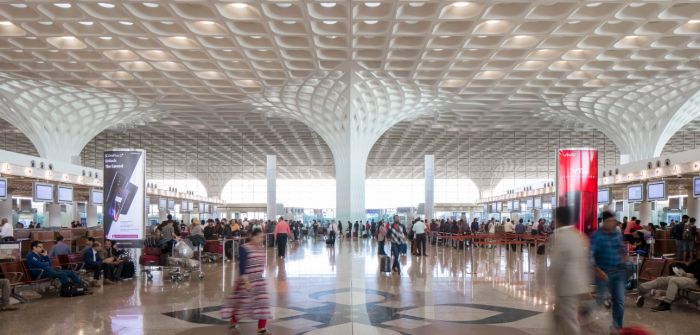A new Indian airport terminal is among the winners in the American Institute of Architects’ (AIA) 2020 Architecture Awards.
The 2020 Architecture Awards program celebrates the best contemporary architecture and highlights the many ways buildings and spaces can improve lives. The nine-member jury selected submissions that demonstrate design achievement, including a sense of place, purpose, history, and environmental sustainability.
This year’s eight recipients included the Chhatrapati Shivaji International Airport Terminal 2, in Mumbai, India. The terminal was designed by Skidmore, Owings & Merrill.
The design for the new terminal is an x-shaped, four-level plan that seamlessly fits the site, avoiding the nearby villages and river, and maximizes frontage for aircraft parking. The terminal also provides aircraft contact gates that can handle 32 wide-body aircraft or 48 narrow-body aircraft for both international and domestic travel. In India, this meant that the design needed to separate departing and arriving passengers to accommodate local customs, and separate post-security facilities for both international and domestic sectors. The design team arranged the post-security facilities to pivot between both sectors and enable the 41,800m2 (450,000ft2 ) terminal to fit the site.
To keep the airport functioning at all times, the terminal was constructed in phases. It embodies Mumbai through a forward-looking design that is both energetic and distinctively Indian. Instead of copying historic models for the massing, interiors and details, the design evokes pavilions and pillared halls. The truss roof structure features cladding with a coffer pattern that echoes traditional Indian decorative patterns and extends well over the departure curb to provide shelter from the sun and rain.
A number of the interior details were designed in collaboration with a local fashion house and are based on traditional craft patterns. Gate lounge light fixtures resemble the lotus, India’s national flower, and provide a hand-crafted feel that helps humanize the passenger spaces. In addition, several hundred meters of wall space were set aside to display artwork.


